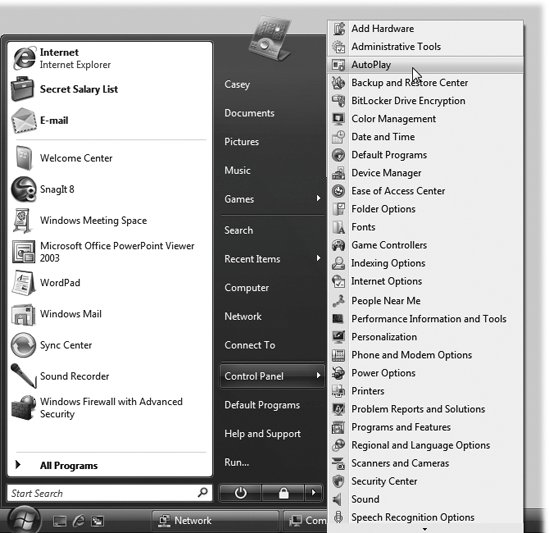INTRODUCTION
| Let's face it: in the last few years , all the fun went out of using a PC. Viruses, spyware, spam, pop-ups, and other Web nastiness had turned us all into cowering system administrators, spending far too much time trying to shore up our computers rather than using them to get things done. Why on earth didn't Microsoft do something? Of course, now we know: Microsoft was doing something. It just took five years to finish doing it. That something was Windows Vista, a new version (well, OK, five versions) that comes with every porthole sealed, every backdoor nailed shut, and every design flaw reworked by a newly security-conscious squad of Microsofties. Microsoft won't go as far as saying that Vista is invulnerable; nothing with 50 million lines of code could possibly be bulletproof. The bad guys are going to do their best. But it's safe to say that Vista is by far the most secure Windows yet, and that the sociopaths of the Internet will have a much, much harder time. That's not all Microsoft accomplished in writing Vista, though. As you'll notice within the first 5 seconds, the company also gave the operating system a total overhaul , both in its capabilities and its look. Vista is the best-looking version of Windows ever. Version ChaosYou thought Windows XP was bad, with its two different versions (Home and Pro)? Windows Vista comes in five different versions: Home Basic, Home Premium, Business, Enterprise, and Ultimate. And that's not even counting the Starter edition, sold exclusively in poor countries outside North America, or the two "N" versions (like Home Basic N), which are sold in Europe to comply with a different set of antitrust laws. Tip: This book series, "for Starters," has nothing to do with Windows Vista, Starter Edition. In fact, we thought of it first. :) Microsoft says that each version is perfectly attuned to a different kind of customer, as though each edition had been somehow conceived differently. In fact, though, the main thing that distinguishes the editions is the suite of programs that comes with each one. For example:
Except where noted, every word in this book applies equally well to every Vista version. Meanwhile, if some feature makes you salivate, fear not. Microsoft is only too happy to let you upgrade your copy of Windows Vista to a more expensive edition, essentially "unlocking" features for a fee. Tip: Vista Enterprise is not sold in any store. It's sold directly to corporations for mass installation by highly paid network geeks . About This BookWindows Vista comes with no printed user guide at all. To learn about the thousands of pieces of software that make up this operating system, you're supposed to read the online help screens. Unfortunately, as you'll quickly discover, these help screens are tersely written, offer very little technical depth, and lack examples. You can't even mark your place, underline, or read them in the bathroom. The purpose of this book, then, is to serve as the startup manual that should have accompanied Windows Vista. In these pages, you'll find step-by-step instructions for using almost every important Windows feature. About the OutlineThis book is divided into seven parts , each containing several chapters:
At the end of the book, three appendixes provide a guide to installing this operating system, the "Where'd It Go?" Dictionary, which lists every feature Microsoft moved or deleted on the way to Windows Vista, and a master list keyboard shortcuts in Vista. About |
|
About MissingManuals.com
You're invited and encouraged to submit corrections and updates to this book's Web page at www.missingmanuals.com. (Click the book's name , and then click the Errata link.) In an effort to keep the book as up-to-date and accurate as possible, each time we print more copies of this book, we'll make any corrections you've suggested.
Even if you have nothing to report, you should check that Errata page now and then. That's where we'll post a list of the corrections and updates we've made, so that you can mark important corrections into your own copy of the book, if you like.
In the meantime, we'd love to hear your suggestions for new books in the Missing Manual line. There's a place for that on the Web site, too, as well as a place to sign up for free email notification of new titles in the series.
EAN: 2147483647
Pages: 175

 These
These 